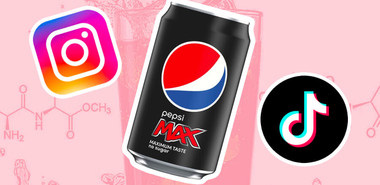Explore the basics of the Keto diet with our simple guide. Understand how this low-carb, high-fat approach could fit into your lifestyle and potentially benefit your health. Whether you’re new to Keto or just need a quick refresher, our blog offers all the essential information to get you started.
What is the Keto Diet?
The ketogenic diet is a low-carb, high-fat diet. On the keto diet, you drastically cut back on carbs (like sugar, pasta, and bread) and replace them with fats. This shift puts your body in a state called ketosis, where it burns fat for energy.
TLDR: Keto Diet Basics
The keto diet focuses on high fat, moderate protein, and low carbohydrate intake. Here are the basic rules:
- Limit carbs: Typically, aim for fewer than 50 grams of net carbs per day.
- Focus on high-fat foods: Fat should make up about 70-80% of your total calorie intake.
- Moderate protein: Consume a moderate amount of protein to help maintain muscle mass, usually around 20-25% of your total calorie intake.
- Avoid sugar: Cut out all sugary drinks and snacks.
- Eat whole foods: Focus on meats, fatty fish, eggs, cheese, nuts, avocados, oils, and low-carb vegetables.
- Stay hydrated: Maintain electrolyte balance by consuming enough water, salt, potassium, and magnesium.
The Goal of Keto is Ketosis
In ketosis, your body becomes efficient at burning fat. Normally, your brain relies on carbs, but in ketosis, your liver turns fat into ketones, a great brain fuel. This process not only aids in weight loss by using your fat stores but also stabilises blood sugar and insulin levels.
Types of Keto Diets
- Standard Ketogenic Diet (SKD): This is the typical keto diet, with about 75% fat, 20% protein, and 5% carbs.
- Targeted Ketogenic Diet (TKD): Allows extra carbs around workouts.
- High-Protein Ketogenic Diet: Includes more protein, ideal for gym-goers.
- Cyclical Ketogenic Diet (CKD): Involves periods of higher carb intake, like 5 days of keto followed by 2 days of higher carbs.
Does Keto Help You Lose Weight?
The keto diet can lead to initial weight loss, largely due to water loss from reduced carb intake. It also stabilises hunger and energy levels by eliminating insulin spikes from high-carb foods. By burning body fat for energy, you’ll see a reduction in weight over time.
Is the Keto Diet Right for You?
Who the Keto Diet Is Good For:
- Individuals Aiming for Weight Loss: Particularly effective for rapid weight loss.
- People with Type 2 Diabetes or Prediabetes: Can help in managing blood sugar levels.
- Those Struggling with Appetite Control: High fat content can reduce hunger cravings.
- People Seeking Improved Mental Clarity: Some experience enhanced focus and cognitive function.
- Fitness Enthusiasts in Certain Categories: Like those focusing on endurance sports or looking to increase fat utilization.
Who the Keto Diet May Be Bad For:
- Athletes Needing Quick Energy: High-carb diets are often better for high-intensity sports.
- Individuals with a History of Eating Disorders: Highly restrictive diets may trigger unhealthy behaviors.
- People with Certain Health Conditions: Like those with kidney disease, pancreas issues, or certain metabolic disorders.
- Pregnant or Breastfeeding Women: They require a more balanced diet for fetal and infant development.
- Those who Prefer a High-Carb Diet: May find the keto diet too restrictive and hard to maintain.
- Individuals with a High Fiber Requirement: Keto might not provide enough fiber for digestive health.
Always consult a healthcare professional before starting a new diet, especially one as specific as the keto diet, to ensure it aligns with your personal health needs and conditions.
Side Effects of the Keto Diet
Initially, you might face digestive issues, mood swings, and dehydration as your body adjusts. These usually subside, but bad breath can persist due to ketones in your breath.
Keto-Friendly Food List
- Meats: Beef, pork, lamb, chicken, turkey.
- Seafood: Salmon, mackerel, sardines, shrimp.
- Eggs: Preferably free-range.
- Dairy: Cheese, butter, heavy cream, Greek yogurt (full fat).
- Nuts and Seeds: Almonds, walnuts, flaxseeds, pumpkin seeds.
- Healthy Oils: Olive oil, coconut oil, avocado oil.
- Avocados: Whole avocados or freshly made guacamole.
- Low-Carb Vegetables: Leafy greens, broccoli, cauliflower, zucchini.
- Condiments: Salt, pepper, herbs, and spices.
Non-Keto Friendly Foods
- Sugary Foods: Soda, fruit juice, smoothies, cake, ice cream, candy.
- Grains and Starches: Wheat-based products, rice, pasta, cereal.
- Fruit: All fruits except small portions of berries like strawberries.
- Beans and Legumes: Peas, kidney beans, lentils, chickpeas.
- Root Vegetables: Potatoes, sweet potatoes, carrots, parsnips.
- Low-Fat or Diet Products: These are often high in carbs.
- Some Condiments and Sauces: Barbecue sauce, honey mustard, ketchup.
- Unhealthy Fats: Processed vegetable oils, mayonnaise.
- Alcohol: Many alcoholic drinks are high in carbs.
Pros and Cons of the Keto Diet
| Pros of Keto Diet | Cons of Keto Diet |
|---|---|
| Promotes Rapid Weight Loss: Efficient in burning body fat. | Nutrient Deficiencies: Restrictive nature can lead to lack of essential nutrients. |
| Appetite Control: High-fat content can lead to reduced appetite. | Difficult to Sustain: Can be challenging to maintain long-term due to restrictiveness. |
| Blood Sugar Stability: Beneficial for people with type 2 diabetes or prediabetes. | Keto Flu: Symptoms like headache, fatigue, and irritability during initial phase. |
| May Improve Heart Health: Potential reduction in triglycerides and increase in ‘good’ cholesterol. | Social and Lifestyle Limitations: Dining out and social eating can be challenging. |
| Brain Function: Some evidence suggests improved focus and energy. | Digestive Issues: Lack of fiber can lead to constipation or digestive discomfort. |
| Potential Cancer-Fighting Properties: Early research suggests benefits in cancer prevention. | Risk of Yo-Yo Dieting: Rapid weight regain possible after stopping the diet. |
Should You Try the Keto Diet?
The keto diet can be effective but isn’t for everyone. It’s important to balance your diet and listen to your body. For some, a moderate approach with reduced carbs might be healthier and more sustainable. Remember, the best diet is one that you can maintain in the long term.
Keto Diet FAQs
Can I eat fruit on a keto diet?
Yes, but in moderation and focusing on low-carb fruits. Berries like strawberries, blueberries, raspberries, and blackberries can be consumed in small quantities as they have lower net carbs than other fruits.
Is the keto diet good or bad?
The keto diet can be beneficial for weight loss, blood sugar control, and other health conditions. However, it’s not suitable for everyone and may have side effects like the keto flu, nutrient deficiencies, and long-term heart health risks due to high saturated fat intake. It’s important to consult with a healthcare professional before starting the keto diet, especially if you have existing health conditions.
How quickly can I lose weight on a keto diet?
Weight loss on a keto diet can vary from person to person. Some may notice significant weight loss in the first few weeks, largely due to water weight. Sustainable fat loss will occur gradually over time, and the pace can vary based on individual metabolism, caloric intake, and activity level.
Can I drink alcohol on a keto diet?
Alcohol can be consumed in moderation on a keto diet, but it’s important to choose low-carb options like dry wine, champagne, or spirits mixed with zero-carb beverages. Be mindful that alcohol can impair judgment, leading to less keto-friendly food choices.




